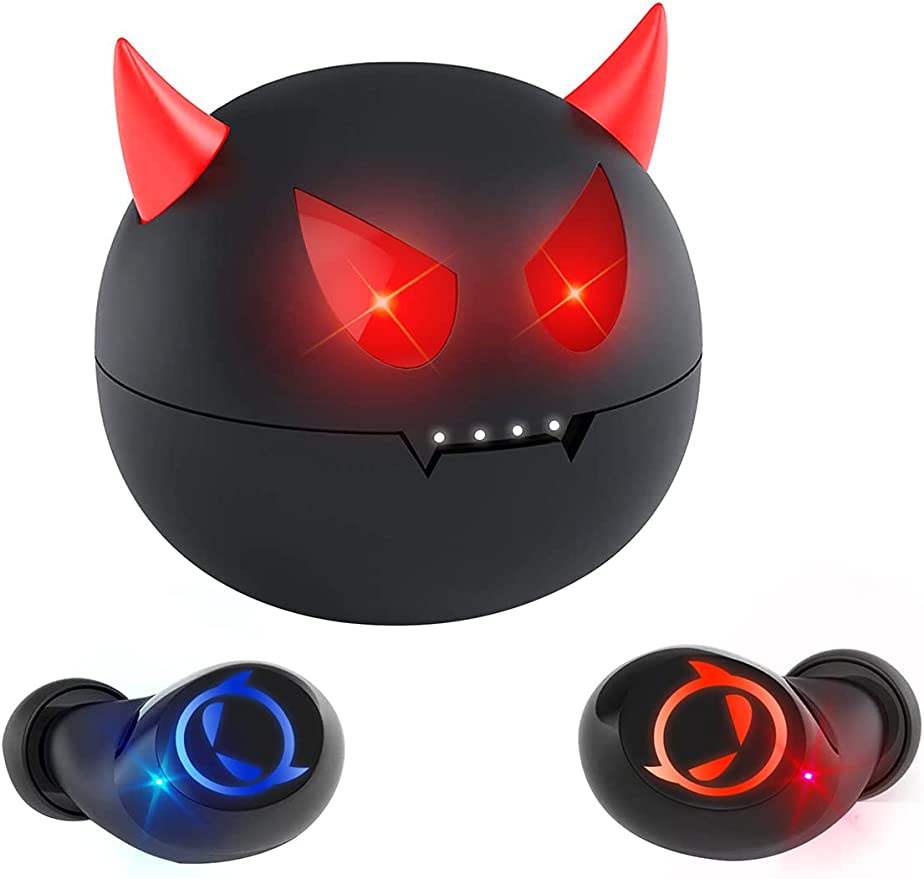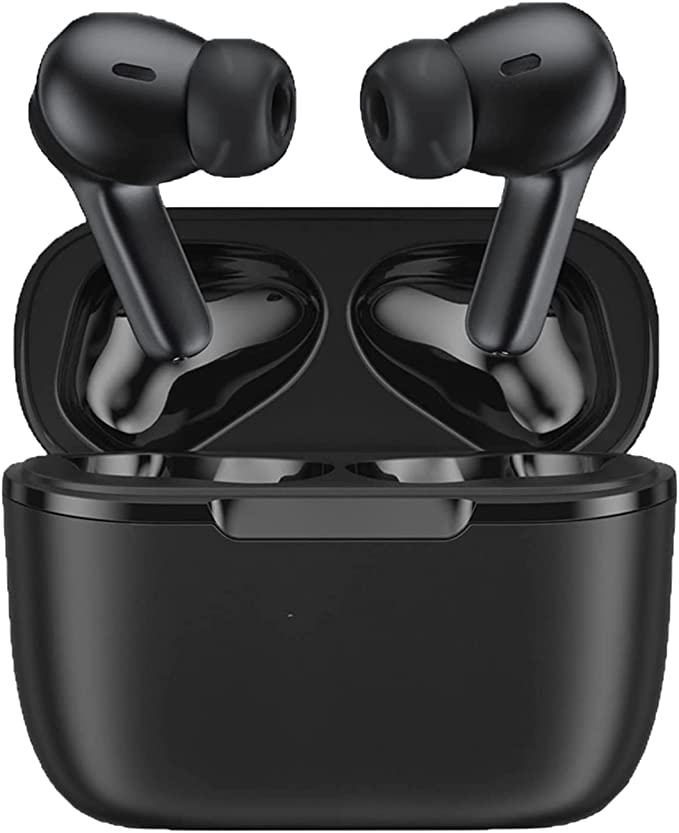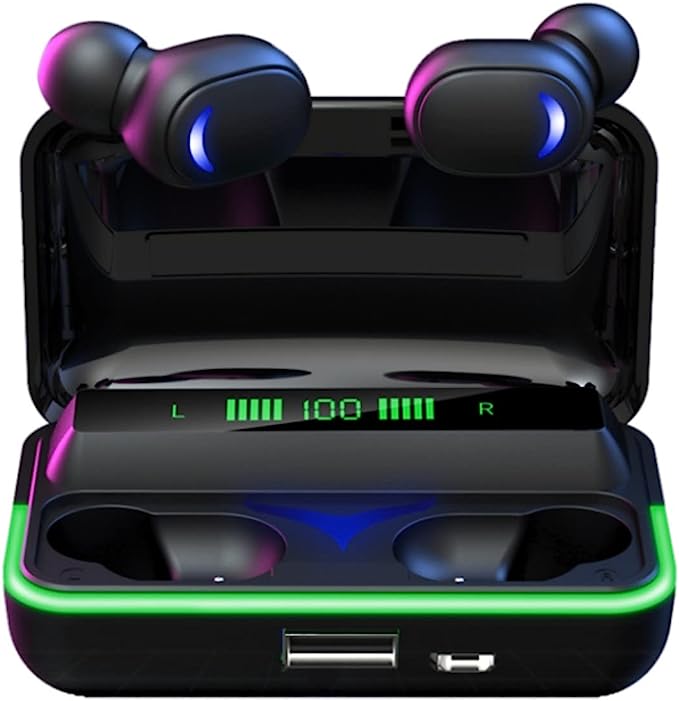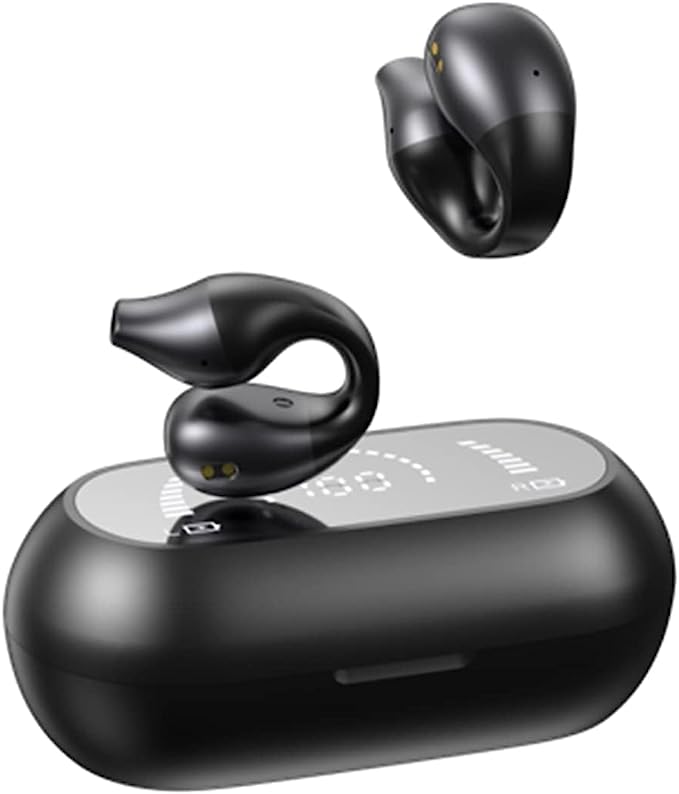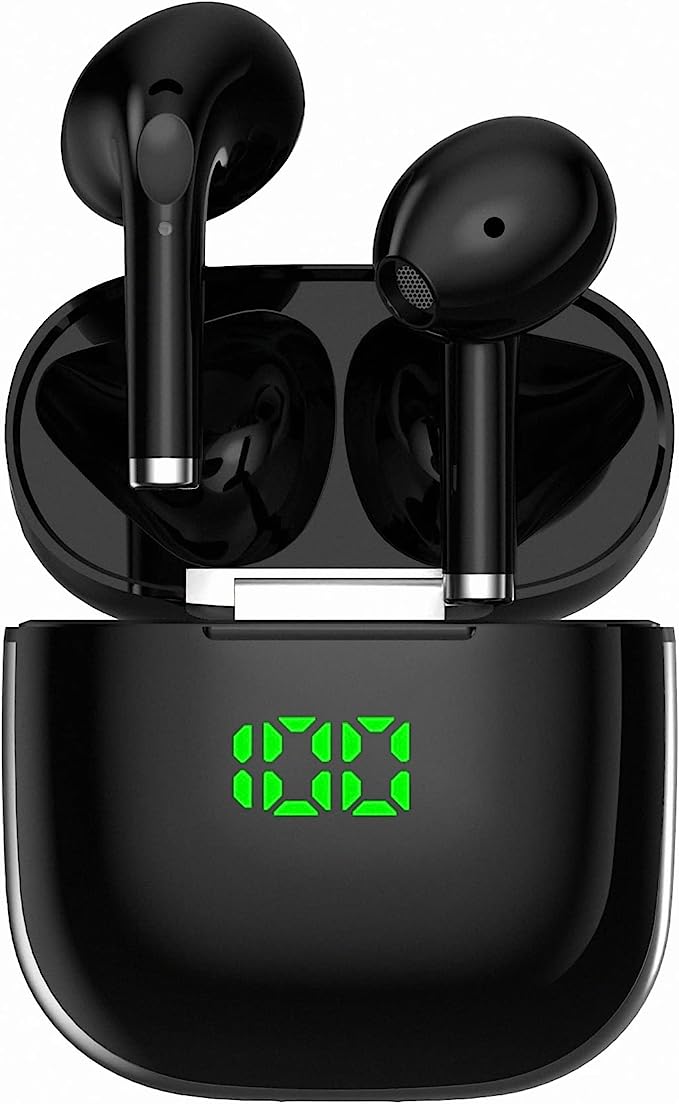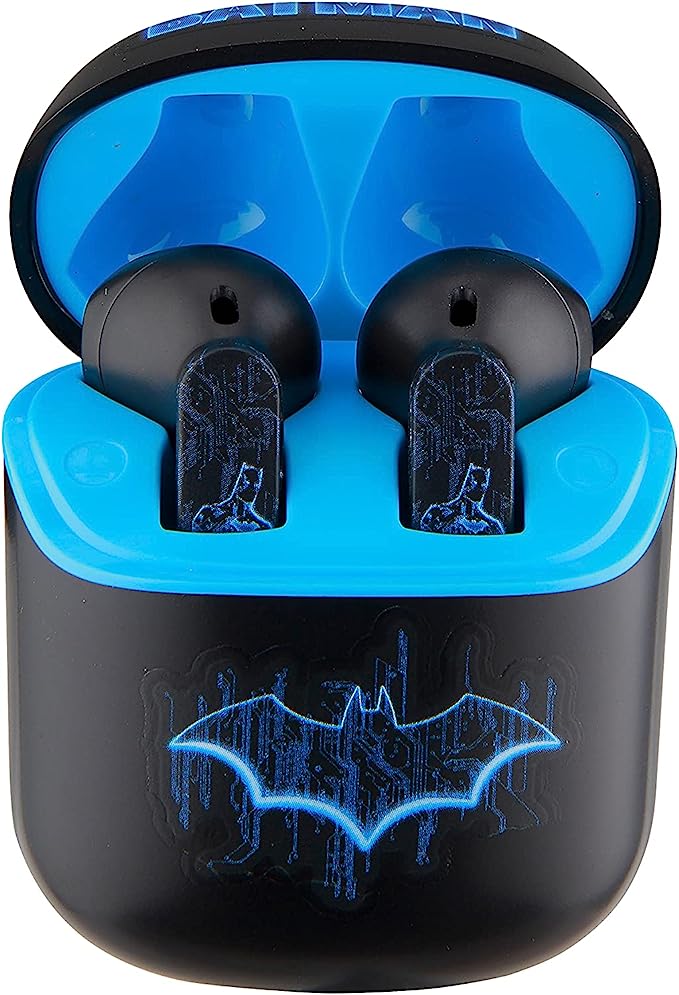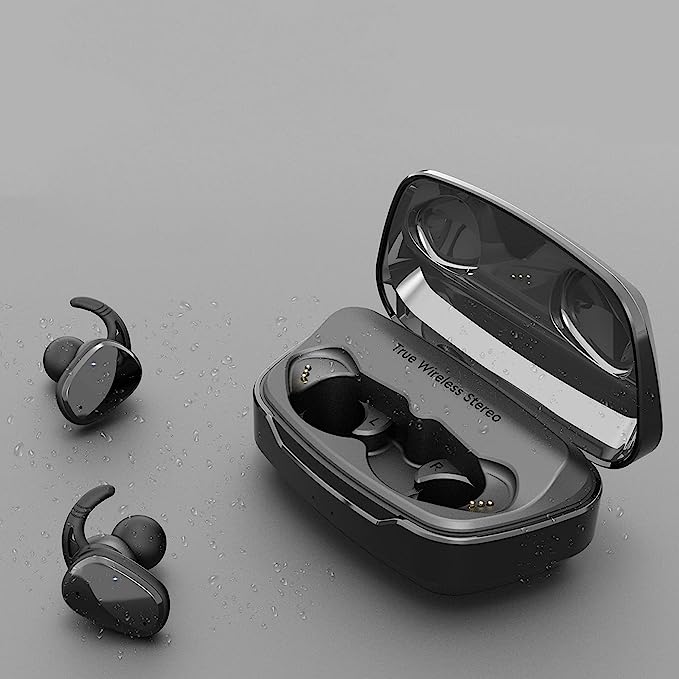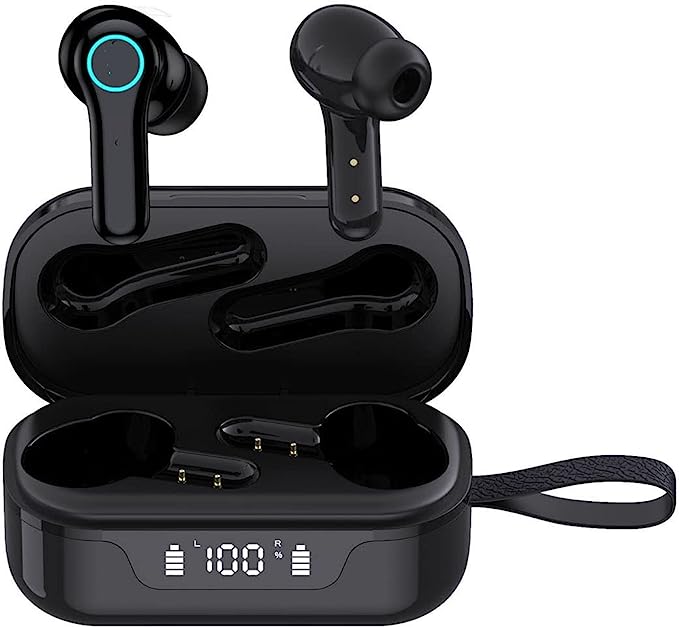Skullcandy Push Active: Secure Fit Meets Smart Audio Tech for Your Active Life
Update on April 13, 2025, 6:23 p.m.
There’s a unique rhythm to an active life. It’s the pounding of feet on pavement, the clang of weights in the gym, the rush of wind on a mountain trail. And often, we want a soundtrack to match. But finding audio gear that can truly keep pace – staying put during intense bursts, shrugging off sweat, and letting you stay focused – can feel like its own endurance challenge. This is the space Skullcandy, a brand born on the snowy chairlifts of Park City, Utah, aims to conquer with their Skullcandy Push Active In-Ear Wireless Earbuds. They promise more than just tunes; they offer a toolkit designed to integrate seamlessly into demanding activities. Let’s move beyond the marketing buzz and explore the engineering and science packed into these buds, understanding how they tackle the real-world hurdles faced by athletes and adventurers.

Defying Gravity and Grime: The Engineering of a Secure, Resilient Fit
Ask anyone who’s tried exercising with standard wireless earbuds, and you’ll likely hear a familiar tale of frustration: the constant readjusting, the fear of one popping out mid-stride, or the tragic slow-motion drop onto unforgiving concrete. It’s the runner’s nightmare and the lifter’s perpetual annoyance. The Push Active directly confronts this primary challenge with a two-pronged approach: clever ergonomics and robust environmental sealing.
First, the most visually distinct feature: the flexible over-ear hooks. These aren’t just passive loops; they’re designed based on fundamental ergonomic principles. Think of how a well-designed backpack uses shoulder straps and potentially a hip belt to distribute weight and stabilize the load against your body’s movement. Similarly, the ear hooks on the Push Active wrap gently but securely over the contours of your outer ear (the pinna). This does two crucial things: it significantly broadens the contact area, reducing pressure points for comfort, and it creates a reliable anchor point that counteracts the inertial forces generated by jumping, running, or sharp head turns. The weight of the earbuds (which are quite light overall, contributing to comfort) is no longer solely reliant on friction inside the relatively small ear canal. While the source material indicates these hooks are made of a soft, flexible material, user feedback suggests they aren’t the “bendable/shapable variety” – meaning they offer a consistent shape designed for broad compatibility rather than individual molding. This highlights a common design trade-off: maximizing universal fit sometimes means less personalized adjustability, which, as some users note, can occasionally interfere with glasses worn simultaneously.
Complementing the physical stability is the IP55 rating. This alphanumeric code isn’t just jargon; it’s a standardized measure of an enclosure’s resistance to solids and liquids, defined by the International Electrotechnical Commission (IEC). Let’s break it down: * The first ‘5’ signifies Dust Protected. It means that while not entirely sealed against all microscopic dust particles, the ingress of dust is limited to a level that won’t interfere with the satisfactory operation of the earbuds. Think trail dust, chalk dust in the gym – the Push Active is built to handle it. * The second ‘5’ indicates Water Jet Resistance. This is tested by projecting water jets from a nozzle (6.3mm) against the enclosure from any direction, under specific pressure and duration conditions. Practically, this translates to protection against sweat – which is more challenging than pure water due to its salinity and slight acidity – and resistance to light rain or splashes. You can confidently power through a sweaty workout or get caught in a drizzle without worrying about shorting out your audio companion. It’s crucial to understand this isn’t full waterproofing (like an IPX7 rating, which implies submersion capability), but it’s precisely the level of protection needed for the vast majority of land-based sports and activities.
Together, the ear hooks and the IP55 rating form a formidable defense against the primary physical challenges of workout audio: staying securely in place and surviving the inevitable encounter with sweat and the elements.

Talk to Your Tech: Hands-Free Control When You Need It Most
Picture this: you’re hitting your stride on a run, deep in the zone, and your phone rings, or you want to skip to the next power song. Fumbling in a pocket or armband breaks your rhythm, distracts you, and can even be a safety hazard, especially on busy paths or roads. The Push Active addresses this with Skull-iQ Smart Feature Technology, headlined by its hands-free voice control.
By saying the wake phrase, “Hey Skullcandy,” you activate the earbuds’ built-in microphone and processing capabilities. This isn’t magic; it’s the application of speech recognition algorithms. Simpler commands like “Play,” “Pause,” “Volume Up,” or “Accept Call” might be processed directly on the earbuds’ internal chipset (local processing), offering quick responses without needing your phone’s intervention. For more complex requests, particularly those involving third-party services like Alexa (which requires downloading the Skull-iQ App to enable and link your Amazon account), the process typically involves securely sending your voice command via Bluetooth to your phone, which then relays it to cloud servers for interpretation. The cloud service processes the request (like fetching weather info, controlling a smart home device, or finding a specific song on a streaming service) and sends the result back to your earbuds almost instantaneously.
The beauty of Skull-iQ lies in this ability to manage core audio functions and access broader assistant capabilities without ever touching your device. It allows you to maintain focus on your activity and your surroundings. Of course, voice control isn’t always perfect or preferable, especially in very noisy environments or when you need discrete control. Recognizing this, Skullcandy retains physical buttons on each earbud. Crucially, the Skull-iQ App allows you to customize the functions of these button presses (single press, double press, press and hold), giving you another layer of tactile, reliable control tailored to your preferences. Want instant access to Spotify Tap? Or trigger your phone’s native assistant (like Siri or Google Assistant)? You can likely map those functions through the app.

Power Through, Find It Fast: Conquering Battery Anxiety and Loss
Two modern anxieties plague wireless earbud users: the dread of the battery dying mid-session and the sickening feeling of realizing one tiny, expensive bud has vanished. The Push Active tackles both with impressive endurance and integrated tracking technology.
The headline figure is 44 hours of total battery life. This impressive number comes from the combined capacity of the earbuds themselves and the portable charging case. Inside both are Lithium Polymer (Li-Po) batteries (three in total, according to the specs). Li-Po batteries are a popular choice for compact electronics because they offer a good energy density (storing a lot of power relative to their weight and volume) and can be manufactured in flexible shapes, allowing designers to optimize space within the small confines of earbuds and cases. The earbuds hold a certain amount of charge for continuous playback (the exact single-charge duration isn’t specified in the source, though one user review mentions around 4 hours listening to podcasts at full volume, indicating it’s substantial but variable). The case then acts like a mobile power bank, capable of recharging the buds multiple times over before the case itself needs recharging via its USB-C port. While the source mentions a “10 minutes” charging time, it likely refers to a quick-charge feature providing a certain amount of playback (e.g., 1-2 hours) after a brief charge, rather than a full charge time – a common feature for user convenience. This extensive total battery life means you could potentially go through a full week of workouts and commutes without needing to plug the case into the wall.
But what about losing one? Dropping a tiny earbud in the gym, on a trail, or down the side of a car seat is distressingly easy. Here, the Push Active integrates Tile Finding Technology. This isn’t just a software trick; it leverages Bluetooth Low Energy (BLE) hardware within each earbud. Each bud periodically broadcasts a unique, low-power Bluetooth signal. If you misplace a bud, you can use the Tile App on your smartphone to:
1. See its last known location: The app records the location where your phone was last connected to the earbud via Bluetooth.
2. ‘Ring’ the earbud: If the bud is nearby (within Bluetooth range, typically up to 30-50 feet depending on obstructions) but out of sight, you can trigger it to play a sound, helping you pinpoint its location audibly.
3. Leverage the Tile Network: This is the clever part. If your lost earbud is outside your phone’s range, its BLE signal can still be anonymously detected by any other device running the Tile app that passes nearby. This detection securely updates the earbud’s location in the Tile system, which you can then see in your app. It effectively turns potentially millions of Tile users into a vast, crowdsourced search party, significantly increasing the odds of recovery without compromising anyone’s privacy. This built-in Tile feature offers genuine peace of mind, protecting your investment against accidental loss.
The Sound Equation: Why Fit is King (Especially for Bass)
While Skullcandy prides itself on its custom-tuned audio (#FeelSkullcandy), the sound quality any user actually experiences from in-ear headphones is profoundly influenced by one critical factor: the acoustic seal. How well the eartip fits and seals within your ear canal dictates much of the final sound signature, especially the bass response.
Here’s the basic acoustic science: Low-frequency sound waves (bass) need a relatively enclosed volume of air to build up pressure and be perceived effectively by your eardrum. Think of how a subwoofer uses a large cabinet. In your ear, the ear canal acts as that tiny “cabinet.” If the eartip doesn’t create a good seal, bass frequencies effectively “leak” out, resulting in a sound that might be perceived as thin, tinny, or lacking richness and impact. Higher frequencies are less dependent on this seal.
The Push Active ships with multiple sizes of silicone eartips (typically Small, Medium, and Large, as mentioned in reviews). Finding the size that provides a comfortable yet snug seal for your unique ear canal shape is paramount. It not only maximizes passive noise isolation (blocking out some external sound) and improves stability, but it’s also the key to unlocking the intended bass performance and overall audio balance Skullcandy engineered.
User feedback from the provided source highlights this very point. Some users found the included eartips “too short/shallow,” leading to a mediocre seal and disappointing bass until they swapped them for tips from older Skullcandy models. This underscores the importance of experimentation. What works perfectly for one person might not work for another. Furthermore, achieving this crucial seal can sometimes be complicated by factors like wearing glasses, as the ear hooks might slightly shift the angle or pressure of the earbud in the ear. The included Skull-iQ App features an equalizer, which can help compensate somewhat for individual hearing preferences or minor fit imperfections by allowing you to adjust the levels of different frequencies (bass, mids, treble). It’s a useful tool for personalization, but it can’t fully overcome a poor physical seal. The app also offers a “Stay-Aware Mode,” which uses the external microphones to actively feed in ambient sound, enhancing safety and awareness when needed – essentially the opposite of creating a perfect seal for isolation.

The Push Active Formula: Smart, Secure, and Built for the Grind
Evaluating the Skullcandy Push Active requires looking beyond individual specs and considering the complete package in the context of its intended user and price point (around $40 at the time of the source data). These earbuds aren’t aiming for the absolute pinnacle of audiophile fidelity or cutting-edge active noise cancellation. Instead, they represent a carefully considered formula focused on solving the most pressing problems faced by active individuals.
The secure ear hook design directly tackles the universal issue of earbuds dislodging during vigorous movement. The IP55 rating provides tangible, standardized protection against the sweat and grime inherent in exercise. Skull-iQ delivers the modern convenience and potential safety benefits of hands-free voice control, a notable feature in this price bracket. The impressive 44-hour total battery life alleviates charging anxiety, while the integrated Tile tracking offers invaluable peace of mind against loss.
Yes, achieving the perfect fit might require some experimentation with eartips, and as some user reports suggest, potential Bluetooth signal quirks or charging contact issues might occasionally arise (as can happen with any complex electronic device). But the core value proposition remains strong: a durable, secure, long-lasting, and intelligently controlled audio companion designed specifically to withstand and enhance an active lifestyle. They embody the adventurous spirit of the Skullcandy brand – less about pristine listening rooms, and more about providing a reliable soundtrack for wherever your feet, bike, or board might take you. Choosing the Push Active is choosing a tool purposefully built for the grind, designed to keep the music playing, worry-free, through every stride, rep, and adventure.






